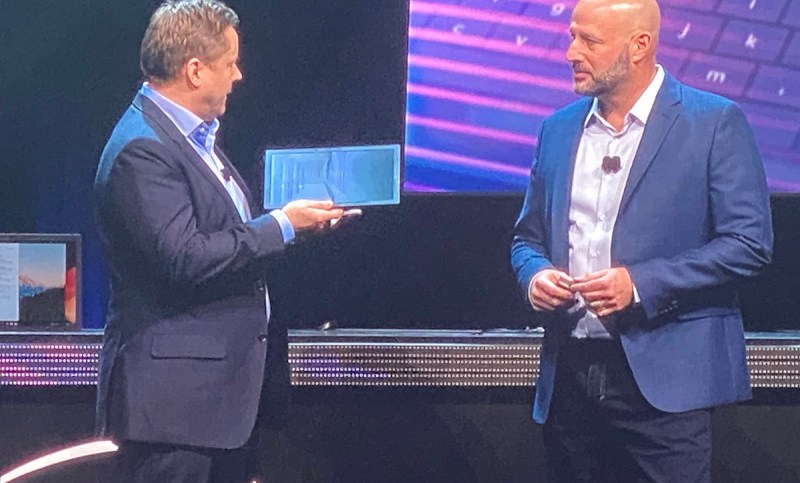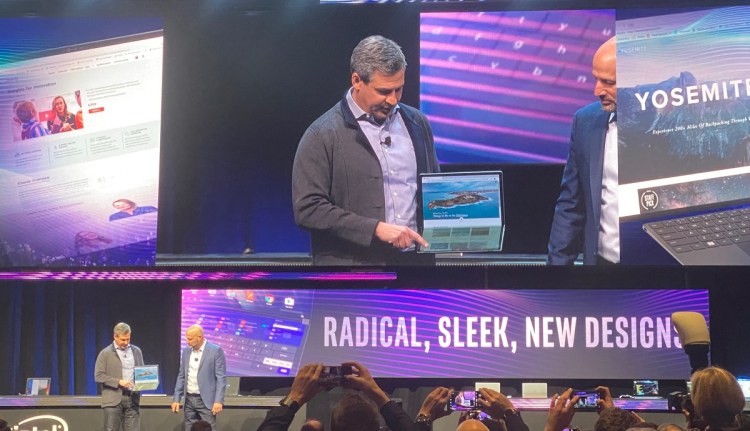Intel showed off a laptop with a 17-inch foldable screen at CES 2020, the big tech trade show in Las Vegas this week.
At the company’s press event, executives at one of the world’s largest semiconductor companies talked about the future of computing. And they showed off a new milestone in the foldable screen trend that started last year with Samsung’s smartphone with a foldable screen.

Above: Lenovo shows a foldable laptop at Intel’s CES event.
The organic light-emitting diode (OLED) screen part is key. After all, we’ve been able to fold our laptops ever since laptops were invented. But now we can also fold the screens. I suppose this makes more sense with foldable tablets, but Intel is expecting laptops with two-screens to become a thing.
This is a case where Intel saw an opportunity to kick start a market and it is pushing it along, said Kevin Krewell, an analyst at Tirias Research, in an interview with VentureBeat. Products aren’t expected to hit the market until 2021.
June 5th: The AI Audit in NYC
Join us next week in NYC to engage with top executive leaders, delving into strategies for auditing AI models to ensure fairness, optimal performance, and ethical compliance across diverse organizations. Secure your attendance for this exclusive invite-only event.
“I am most excited about Tiger Lake’s ability to drive new and unique dual display form factors that I think will breathe even more life into the PC market,” said Patrick Moorhead, an analyst at Moor Insights & Strategy.
Lenovo showed off one device with the dual-screen capability. Part of Intel’s Project Athena to push tech forward, the device can have different data on the two sides of the screen. You can hold it as if it were a book, with different pages on each side. Dell also unveiled one of its foldable designs.
One of the keys is that Microsoft has to do an update to Windows to make the dual-screen technology work with Windows.
Intel said it had more than 50 partners for Project Athena.

